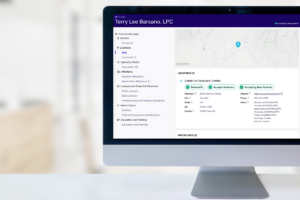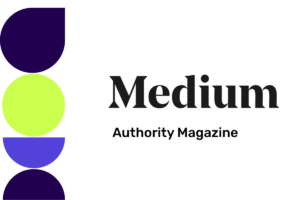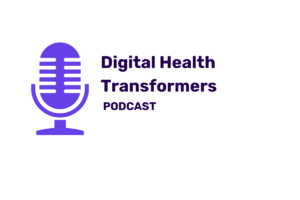Most of the public discourse on interoperability has been centered around EHR vendors and clinical data, in large part because the Office of the National Coordinator for Health Information Technology (ONC) is requiring that these vendors make an expanded set of personal health data available by October 2022. However, EHR data represents just a fraction of the massive amounts of data that are constantly being harvested in healthcare. And ONC’s mandate represents just one of many interoperability scenarios.
“WHILE THE LACK OF INTEROPERABILITY IN HEALTHCARE CREATES ENDLESS BARRIERS, STAKEHOLDERS ACROSS THE SYSTEM TRULY NEED AI SOLUTIONS TO HELP THEM CONNECT THE DOTS WHEN IT COMES TO BOTH RECEIVING DATA, SHARING THEIR OWN DATA WITH OTHER ENTITIES, AND MINING ALL DATA FOR MEANINGFUL INSIGHTS.”
Given the industry’s host of disparate IT systems—layered on top of its tendency to customize technology platforms—there are myriad examples of how extremely challenging it is to derive value, produce accurate insights, and achieve connectivity from healthcare data. And the fact that all of these different systems are unable to communicate with one another and properly exchange information is one of the healthcare industry’s most critical issues.
True interoperability is the long-term goal for the industry—some would go so far as to say it’s the golden ticket for delivering patient-centered care. But like other major initiatives intended to address the inefficiencies of the healthcare system, such as value-based care, we are still far from a universal solution. In the meantime, providers, payers, and other key stakeholders are hungry for solutions that will help them connect their existing legacy IT systems and enable them to share data across systems. Fortunately, companies like Veda now offer relief through Smart Automation solutions that can be implemented both in the near term and the future.
Common interoperability issues
The ultimate reason to strive for global interoperability is to improve patient care and make it easier for all stakeholders to navigate healthcare’s messy data environment. While strides in sharing health data have been made, there are still many hurdles to jump.
“THE NEW PROVISIONS OF THE 21STCENTURY CURES ACT ARE DESIGNED TO IMPROVE HEALTHCARE’S IT ECOSYSTEM IN THE LONG RUN, BUT IN REALITY, IT’S UNLIKELY THAT ANY SINGLE PIECE OF LEGISLATION WILL BE ABLE TO SOLVE ONE OF THE MOST COMPLEX AND LONG-STANDING CHALLENGES IN THE INDUSTRY.”
As mentioned, the most universally acknowledged and long-standing interoperability problem in the healthcare system is around electronic health records (EHRs) data-sharing. Today, approximately 90% of hospitals and physician practices use EHRs. But even when two hospitals have the same EHR vendor, it’s so common for hospitals to customize their systems that in the end, oftentimes neither hospital is able to fully “talk to” each other and easily share information. Many in the industry have set their sights on Health Level 7 (HL7) as a universal solve for this problem—it makes sense that using a standard language would improve data sharing. However, while HL7’s goal is to function as a bridge between modern healthcare systems, it’s also being customized by healthcare organizations, much like EHR platforms.
Although it receives less attention, for payers, the provider roster data processing problem is just as significant of a problem as the EHR data sharing issue, especially now that the No Surprises Act (NSA) is being implemented. It’s so complex an issue that many industry insiders have deemed it unsolvable. More often than not, insurers’ member-facing provider directories are outdated and riddled with errors and inaccuracies. Patients could go through as many 40 entries in a directory before they actually find a provider who can address the health issue they’re experiencing and who is in their geography. Not to mention that it can take up to 6 weeks for new provider information to get updated in the directories. This creates a significant barrier to patients seeking care, one that would never be tolerated or left unsolved by a retailer. If a consumer went on a website like GrubHub, for example, and the first 40 restaurants that came up in their search results weren’t in their delivery area—GrubHub would likely be out of business.
“VEDA’S AUTOMATION IS PARTICULARLY ATTRACTIVE BECAUSE IT CAN DO ALL OF THIS WITHOUT REQUIRING AN ORGANIZATION TO OVERHAUL ITS EXISTING IT INFRASTRUCTURE”
The reason this issue exists is that health plans are continuously processing enormous amounts of provider data that’s not being shared through a common platform between both payers and providers. Payers are ultimately receiving human-generated, messy, and incomplete data spreadsheets from providers, formatted in many different templates. Updates to the roster data can take weeks on end to process, end up costing millions of dollars a year, and still have accuracy rates as low as 60%. This is a problem, as health plans rely on this data to make updates to their directories, along with impacting how providers are paid.
Automation: A solution with both short- and long-term potential
The new provisions of the 21stCentury Cures Act are designed to improve healthcare’s IT ecosystem in the long run, but in reality, it’s unlikely that any single piece of legislation will be able to solve one of the most complex and long-standing challenges in the industry. Given the state of the healthcare ecosystem and the growing number of data sources, AI solutions like Veda’s will be as crucial for achieving data connectivity in the future as this seminal piece of legislation and others that will come after it.
And in the near term, prior to legislative format consolidation, stakeholders across the system (including payers) need AI solutions to help them connect the dots when it comes to both receiving data, sharing their own data with other entities, and mining all data—regardless of its origin—for meaningful insights. Veda’s automation is particularly attractive because it can do all of this without requiring an organization to overhaul its existing IT infrastructure or communicate in a standard language like HL7. The technology is able to sit between disparate systems and act as a translator for the data coming out of each. (Not to mention the major cost efficiencies achieved through automating rote manual tasks that do not require a human brain to execute with accuracy.)
This same automation that helps healthcare organizations function in the absence of true interoperability offers many more benefits. Through Veda’s technology, customers also gain the ability to more easily address compliance at both the federal and state levels, achieve both cost savings and productivity gains, reduce backlog, increase data quality to further cut costs downstream, and more. Existing Health plan customers see improvements across Medicare star ratings (specifically fields related to ease of access to care and quality of member experience), reduce their overall risk exposure (i.e., from sanctioned providers, poor claims system quality, or violations of the NSA), and streamline referral management.
The future of interoperability
Complex, messy data, which is pervasive throughout the entire healthcare ecosystem, creates equally complex issues–not just from a data processing and analysis perspective, but across the whole system. Data sharing and the struggle to achieve interoperability are some of the most difficult and important challenges in the healthcare industry.
Schedule a demo to see how Veda’s science-driven approach can help you optimize data for your organization.
For key stakeholders in the space, waiting on legislation may not be ideal, and as mentioned, there’s ultimately not likely to be a one-size-fits-all approach to achieving interoperable health information exchange. Smart automation is exactly what healthcare organizations need to overcome the lack of data integration across industry systems and bridge data connectivity gaps, both now and in the future.



